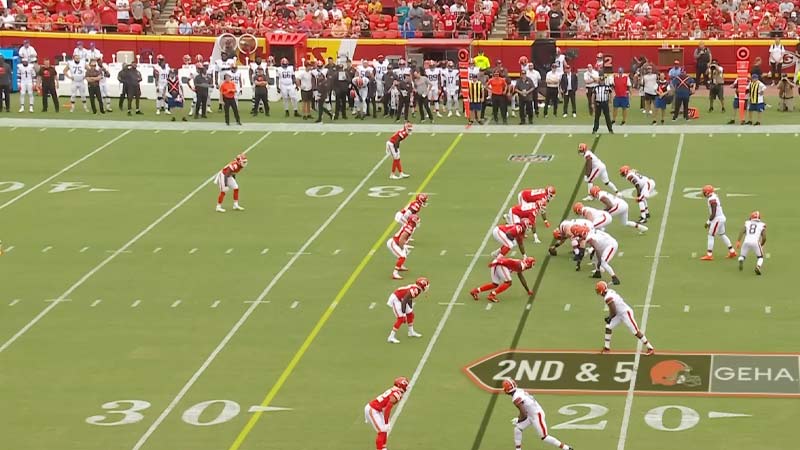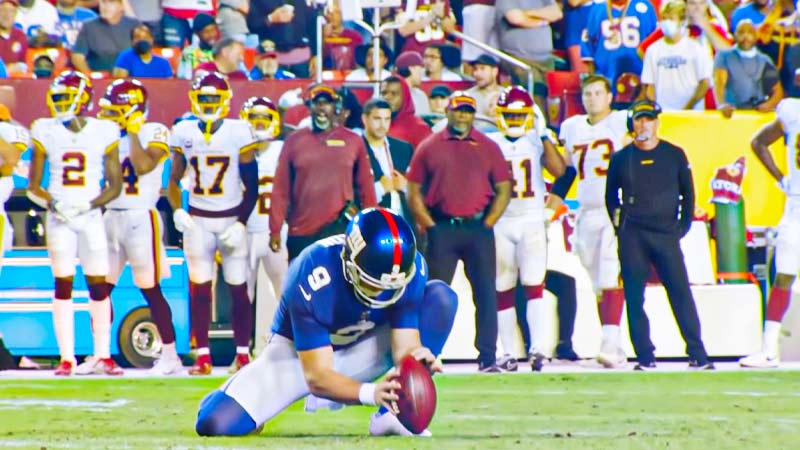In the world of football, the intensity of the game extends beyond the players on the field. Behind every well-executed play and strategic move lies a pivotal area that plays a crucial role in team dynamics and coordination—the bench area.
As fans cheer from the stands and players battle it out on the field, the bench area serves as the nerve center, where coaches, players, and essential team personnel come together to shape the course of the game.
In this blog post, we delve into the significance of the bench area in football, answering five frequently asked questions that shed light on its functions, organization, and impact on the game. Stay focused.
What is the Bench Area in Football
In football, the “bench area” refers to the designated area on the sidelines of the field where the teams’ players and coaching staff sit during a match. It is commonly referred to as the “team bench” or simply the “bench.”
The bench area is where substitute players, coaches, and other team personnel are located during the game.
In most organized football matches, there are specific rules and regulations regarding who is allowed to be in the bench area and what they are permitted to do. Generally, the following individuals are commonly found in the bench area:
- Substitute Players: Players who are not currently on the field but are available to enter the game as replacements for other players.
- Coaching Staff: This includes the head coach, assistant coaches, and other support staff who are responsible for managing the team, making tactical decisions, and providing instructions to players.
- Team Officials: Representatives from the team’s management or administration who may be present to oversee various aspects of the team’s operations.
- Medical Personnel: Trainers and medical staff who provide immediate assistance to players in case of injuries.
- Substituted Players: Players who have been taken out of the game are often required to sit in the bench area.
It’s important to note that the bench area is subject to the rules and regulations of the specific football league or competition. Coaches and players are expected to conduct themselves professionally and follow the instructions of the match officials while in the bench area.
Disputes or misconduct by individuals in the bench area can result in disciplinary actions, including warnings, fines, or even ejections from the game.
What Is the Restricted Zone in the Bench Area?

In American football, the restricted zone in the bench area refers to a specific area along the sidelines where only authorized personnel are allowed. This zone is intended to maintain order, ensure player safety, and provide an unobstructed view for players, coaches, and team staff during the game.
The restricted zone is also commonly known as the “team box” or “coaches’ box.” Let’s explore its characteristics and significance:
Location
- The restricted zone is typically situated between the 30-yard lines on both sides of the field.
- It extends a few yards beyond the sidelines, usually between 25 to 30 feet in width, allowing sufficient space for coaches and staff to move along the sideline.
Access Restrictions
- Only authorized personnel are allowed inside the restricted zone during the game.
- This includes players, coaches, medical staff, trainers, team managers, and other essential team personnel.
Coaching and Communication
- Coaches and team staff positioned in the restricted zone can communicate directly with players on the field and provide real-time instructions and feedback.
- Being in close proximity to the action allows coaches to make quick decisions and adjustments based on the unfolding game situation.
Player Safety
- The restricted zone helps create a buffer space between players on the field and non-playing personnel on the sidelines.
- This reduces the risk of collisions between players and coaches, helping to prevent injuries.
Referee Interaction
- Team captains and designated coaches are allowed to communicate with game officials from within the restricted zone.
- However, they must stay within certain boundaries and maintain appropriate conduct during interactions with referees.
Enforcement
Game officials and security personnel monitor the restricted zone to ensure that unauthorized individuals, such as fans, media, or non-essential staff, do not enter the area during the game.
Game Management
During critical game situations, such as timeouts, the restricted zone is where players and coaches gather to discuss strategies and plan their next moves.
Symbolic Boundary
- The restricted zone serves as a visible boundary that separates the playing field from the team’s sideline area.
- It helps create a sense of organization and professionalism on the sidelines during the game.
It’s important for teams, players, and staff to adhere to the restricted zone rules to maintain a safe and efficient game environment.
Restricted Zone in the Bench Area of NFL

In the NFL, the restricted zone in the bench area is a designated area along the sidelines where only authorized personnel, such as players, coaches, medical staff, and essential team personnel, are permitted during games. It extends between the 30-yard lines on both sides of the field, covering approximately 32 yards from the sidelines.
The restricted zone facilitates effective communication between coaches and players through designated communication systems, enabling real-time instructions and strategy adjustments.
It also contributes to player safety by creating a buffer space between players on the field and non-playing personnel.
Strictly enforced by game officials and security personnel, the restricted zone ensures a controlled and secure environment, allowing teams to manage the game efficiently and maintain a professional sideline atmosphere throughout NFL contests.
Bench Amenities in American Football
In American football, the bench area encompasses more than just a place for players and coaching staff to sit during a game. It serves as a vital hub of activity, strategic planning, and player management.
Over the years, the design and amenities of the bench area have evolved to enhance the overall experience for teams and their personnel. Here are some key aspects of bench amenities in American football:
Seating Arrangements
The bench area typically consists of a long, designated space along the sidelines of the field. The area is divided into sections for the home and visiting teams.
Comfortable and ergonomic seating is provided for players, coaches, and support staff to ensure they can observe the game and communicate effectively.
Player Facilities
Within the bench area, there are amenities catering specifically to players’ needs. This includes designated spaces for players to don and store their helmets, gloves, and other equipment during breaks in play. These areas may also have medical supplies and equipment for immediate treatment of minor injuries.
Communication Tools
Advanced communication systems have become integral to the modern football bench area. Coaches can use headsets to communicate with each other and with players on the field.
This technology allows for real-time adjustments to strategies and tactics, enhancing coordination and decision-making.
Video Technology
Many bench areas are equipped with video monitors that display live game footage, replays, and tactical analysis.
This enables coaches to review plays, identify strengths and weaknesses, and make informed decisions about strategy and player substitutions.
Shelter and Protection
Weather can be unpredictable, so providing shelter is crucial for the well-being of players and coaches. Covered bench areas shield them from rain, snow, or excessive sunlight, ensuring that they can focus on the game without being affected by the elements.
Medical Support
Medical personnel play a vital role in the bench area. They have access to essential medical equipment and supplies to address injuries and provide immediate care to players. This quick response helps players return to the game or receive appropriate treatment as needed.
Support Staff Area
The bench area may also include space for additional support staff, such as equipment managers, statisticians, and other team personnel. This ensures that the operational aspects of the team are managed efficiently during the game.
Fan Interaction
In some cases, the bench area may include areas where fans can get a closer look at the players and coaches. This can enhance the fan experience and create a sense of connection between the team and its supporters.
Security and Control
The bench area is usually closely monitored by security personnel to ensure that only authorized individuals have access. This helps maintain order and prevents unauthorized interference in the game.
The bench area in American football has evolved into a sophisticated and organized space that goes beyond mere seating. It is a dynamic environment where strategy, technology, medical support, and player management converge to contribute to the success of the team on the field.
FAQs
What is the bench area in football?
The bench area in football refers to a designated space along the sidelines of the field where authorized personnel, including players, coaches, medical staff, trainers, and other essential team members, gather during games. It is also known as the “team box” or “restricted zone.”
What is the purpose of the bench area?
The bench area serves as the team’s operational hub during games. It allows coaches to communicate with players on the field through designated communication systems, providing real-time instructions, strategy adjustments, and feedback.
It also facilitates player substitutions, medical support, and game management.
How is the bench area organized?
Players on the bench area are typically arranged based on their positions and roles. Starting players and key substitutes are often positioned closer to the field for quick access, while other players may be further back on the bench.
Coaches and support staff are strategically placed to manage different aspects of the game.
What role does the bench area play in player safety?
The bench area plays a vital role in player safety by creating a buffer space between players on the field and non-playing personnel on the sidelines. This reduces the risk of collisions and injuries during the fast-paced and intense moments of the game.
Are there rules and restrictions for the bench area?
Yes, there are specific rules and restrictions governing the bench area. Only authorized personnel are allowed inside the restricted zone during games.
Unauthorized individuals, including fans and media, are prohibited from entering the area to ensure a safe and controlled environment for team operations.
Bottom Line
While the spotlight in football often shines on the players making incredible plays and scoring touchdowns, the significance of the bench area cannot be overlooked. It is a vital hub where coaches orchestrate strategies, players regroup, and support staff provide essential assistance.
The bench area’s organization, communication capabilities, and focus on player safety make it an indispensable element of the game, contributing to the sport’s competitive spirit and excitement.
As fans continue to be captivated by the electrifying moments on the field, let us also remember the critical role played by the bench area in shaping the outcome of every football battle. Best wishes.







